Eight springtime wildflowers you can eat

Each spring as the world comes alive again, wildflowers begin to burst into color at the same time that humans pull out their weedwackers and lawnmowers to chop off their flower tops or rip them out of flowerbeds. Growing right in our yards and paths are these harbingers of spring—and a lot of them are edible. Be safe and responsible while foraging, and enjoy exploring the natural world around you.
Violets (Violaceae)
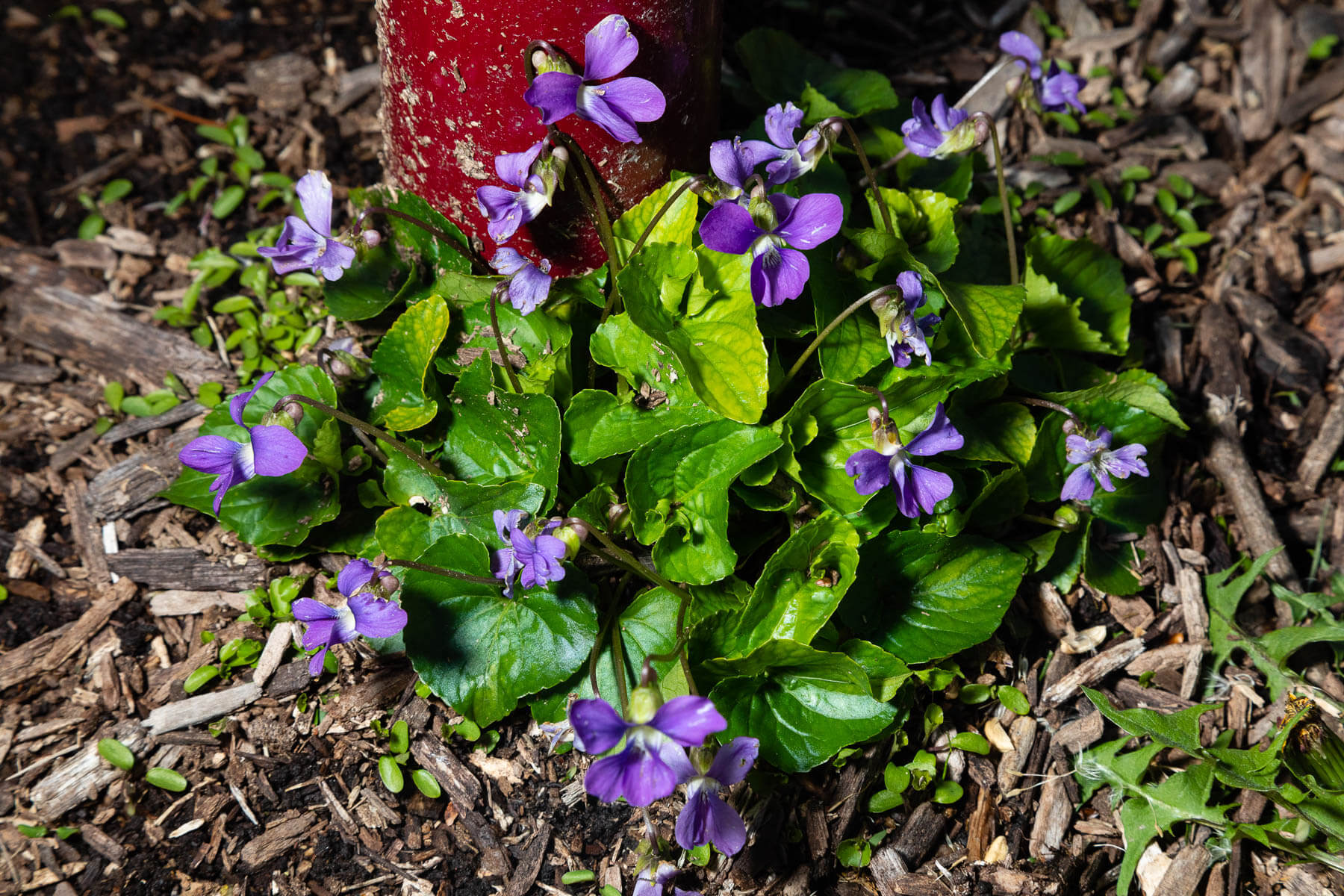 The incredibly variable violet is a treasure of springtime, and the Chesapeake region supports more than 20 different species. These little flowers can come in shades of violet, purple, blue, white, yellow and striped. They are a nectar source for wildlife and grow in almost every habitat. People use their beautiful colors and soft petals to adorn cakes, make jellies, thicken soups or add a pop of color and vitamins to a spring salad (violets are high in vitamins A and C).
The incredibly variable violet is a treasure of springtime, and the Chesapeake region supports more than 20 different species. These little flowers can come in shades of violet, purple, blue, white, yellow and striped. They are a nectar source for wildlife and grow in almost every habitat. People use their beautiful colors and soft petals to adorn cakes, make jellies, thicken soups or add a pop of color and vitamins to a spring salad (violets are high in vitamins A and C).
Chickweed (Stellaria media)
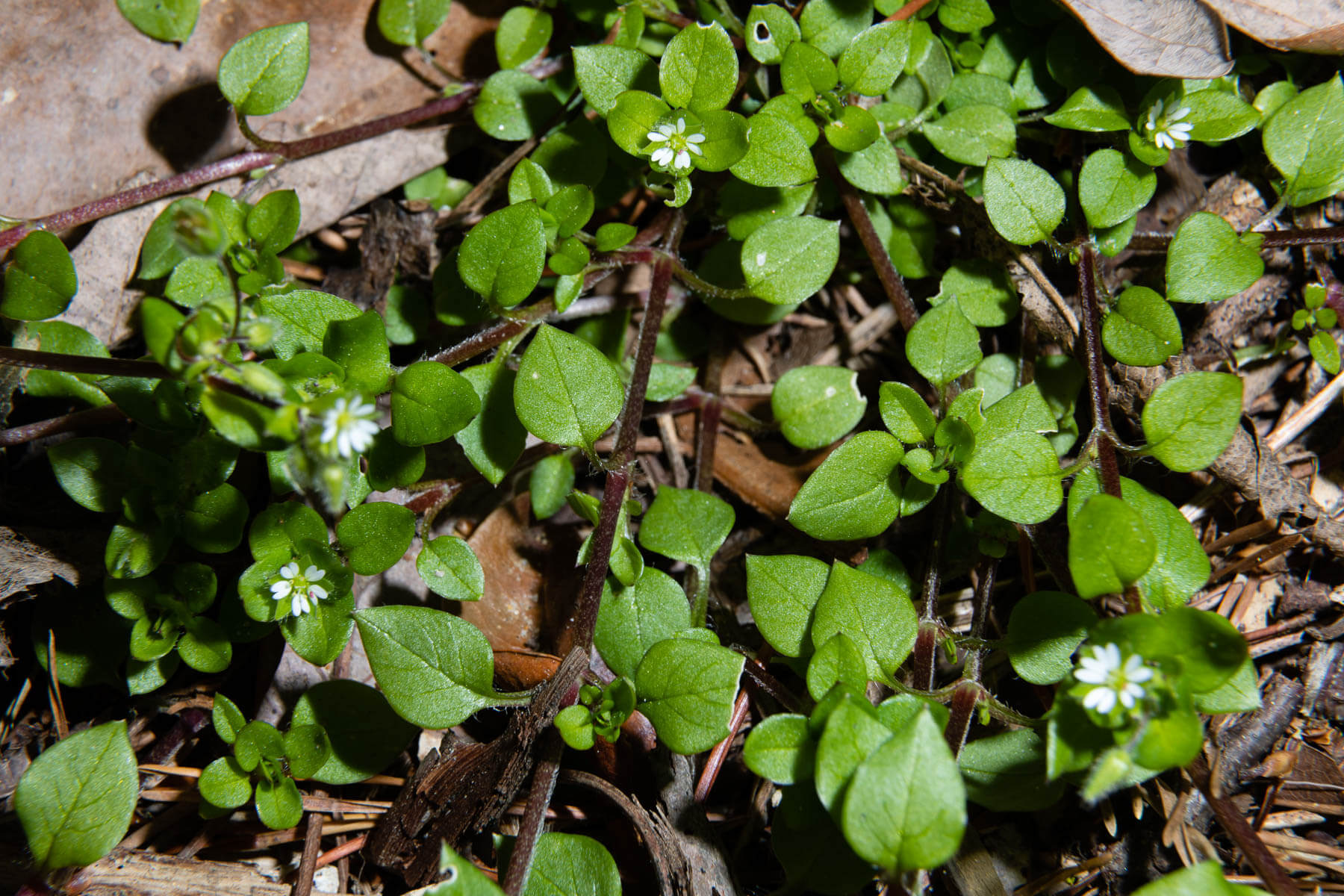 Chickweed is a European invasive that’s a favorite food of chickens and a nice salad choice for people. Eating invasives is a great way to try and reduce their numbers, and many of them, like chickweed, are delicious. Chickweed pops up in the grass and other areas impacted by humans, spreading quickly and creating dense patches. Chickweed produces tiny white flowers and tastes almost sweet, like corn silk.
Chickweed is a European invasive that’s a favorite food of chickens and a nice salad choice for people. Eating invasives is a great way to try and reduce their numbers, and many of them, like chickweed, are delicious. Chickweed pops up in the grass and other areas impacted by humans, spreading quickly and creating dense patches. Chickweed produces tiny white flowers and tastes almost sweet, like corn silk.
Hairy Bittercress (Cardamine hirsuta)
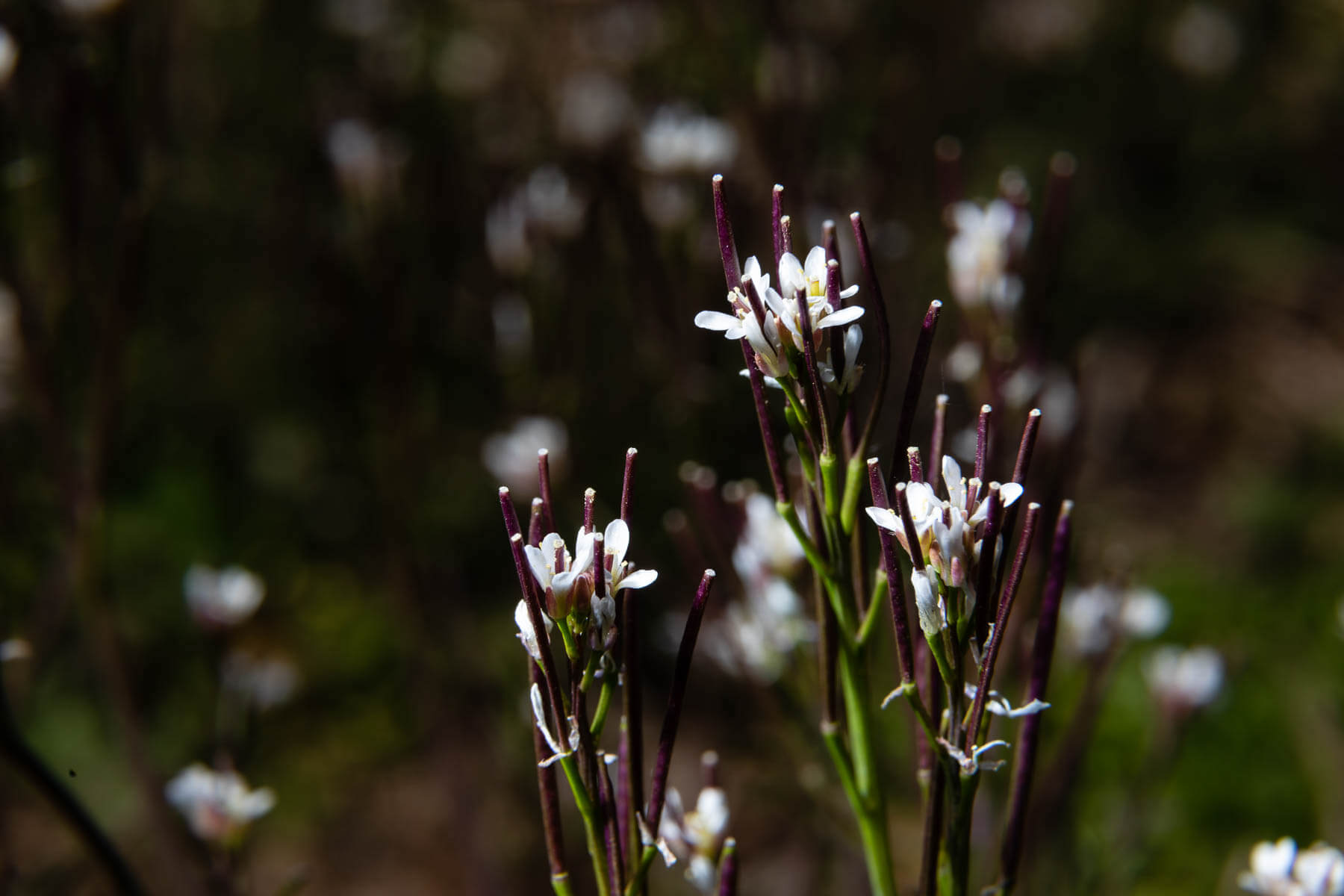 Don’t be fooled by the name! Hairy bittercress is a pleasantly spicy yet mild edible member of the mustard family. It adds a zip to salads and an incredible burst of seasoning to a sandwich, but you don’t have to visit specialty markets to get your hands on this herb. Sidewalks, yards or bursting out of a rockface—invasive hairy bittercress grows wherever it can take hold.
Don’t be fooled by the name! Hairy bittercress is a pleasantly spicy yet mild edible member of the mustard family. It adds a zip to salads and an incredible burst of seasoning to a sandwich, but you don’t have to visit specialty markets to get your hands on this herb. Sidewalks, yards or bursting out of a rockface—invasive hairy bittercress grows wherever it can take hold.
Purple deadnettle (Lamium purpureum)
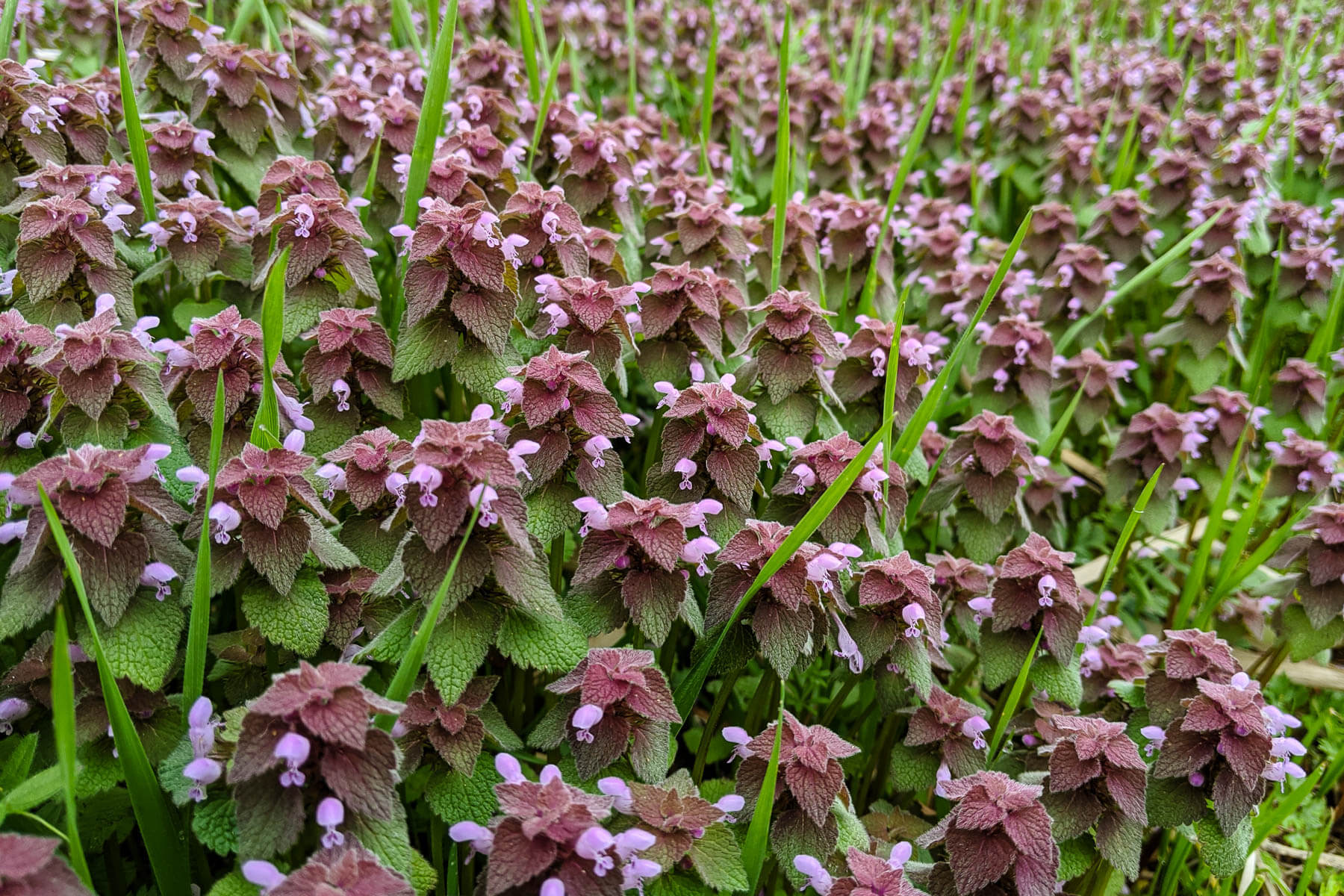
Originally hailing from Europe and Asia, this purple-and-green plant with bright purple flowers is now found all over North America. Deadnettle is not actually a nettle at all—it is a member of the mint family, and the entire plant is edible and highly nutritious. It can sometimes be confused with henbit (Lamium amplexicaule), but a few identifying characteristics will clear it up every time: the spade-shaped leaves of deadnettle turn a shade of purple and are found in quads that cascade down the square stem. Henbit, on the other hand, has more circular green leaves.
Henbit (Lamium amplexicaule)
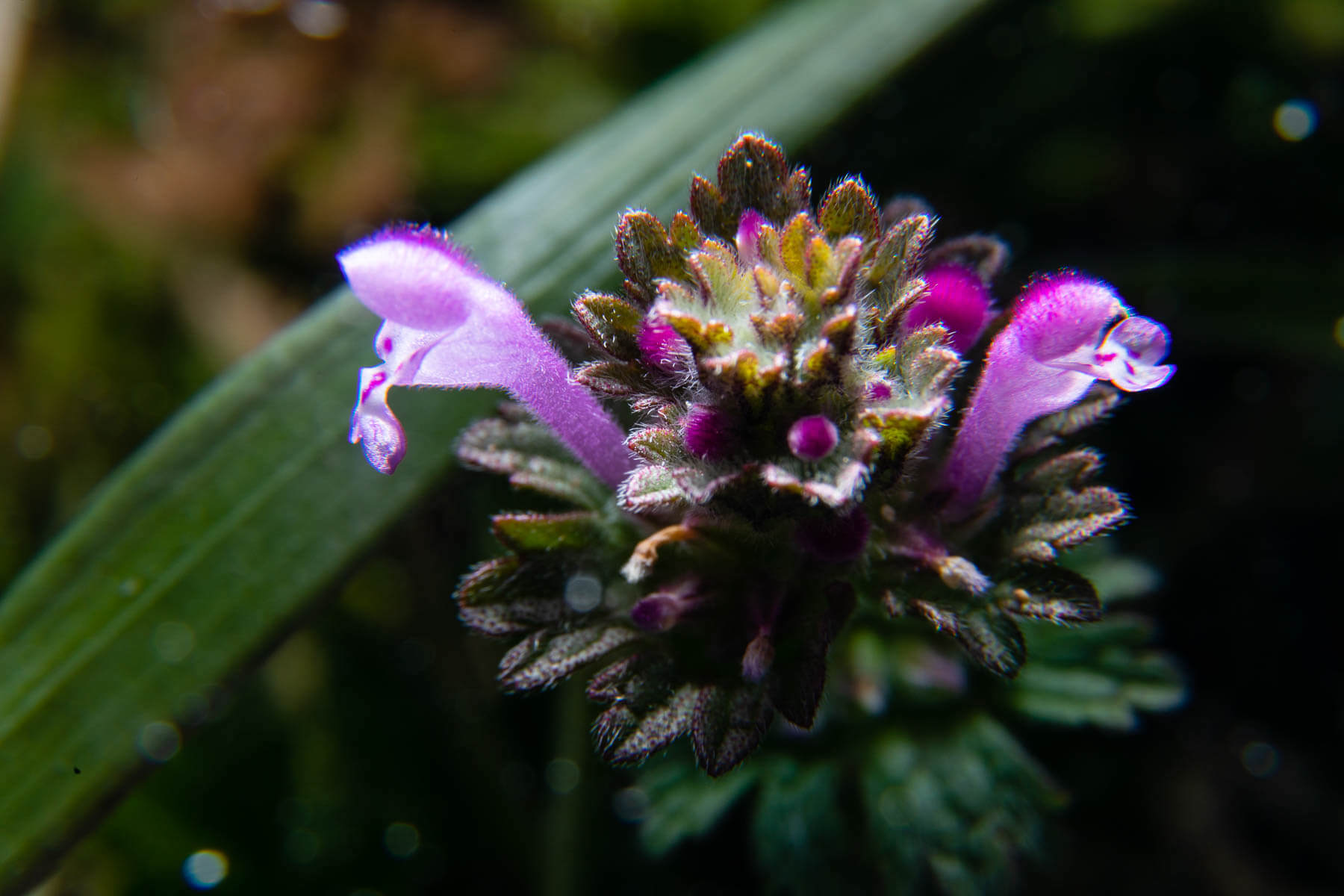 Like purple deadnettle, henbit is the other spring mint family member that creates those adorable pink flowers. They look tiny and nondescript from walking height, but looking closely at one of these flowers opens a world of wonder. Each is tubular, with a draping lower petal, curving hood and spots of deepest purple, resembling the most stunning of orchids. The whirling leaves clasp onto the stem and resemble lace doilies stacked on top of each other in descending size. Both the leaves and flowers are edible.
Like purple deadnettle, henbit is the other spring mint family member that creates those adorable pink flowers. They look tiny and nondescript from walking height, but looking closely at one of these flowers opens a world of wonder. Each is tubular, with a draping lower petal, curving hood and spots of deepest purple, resembling the most stunning of orchids. The whirling leaves clasp onto the stem and resemble lace doilies stacked on top of each other in descending size. Both the leaves and flowers are edible.
Forget-me-nots (Myosotis)
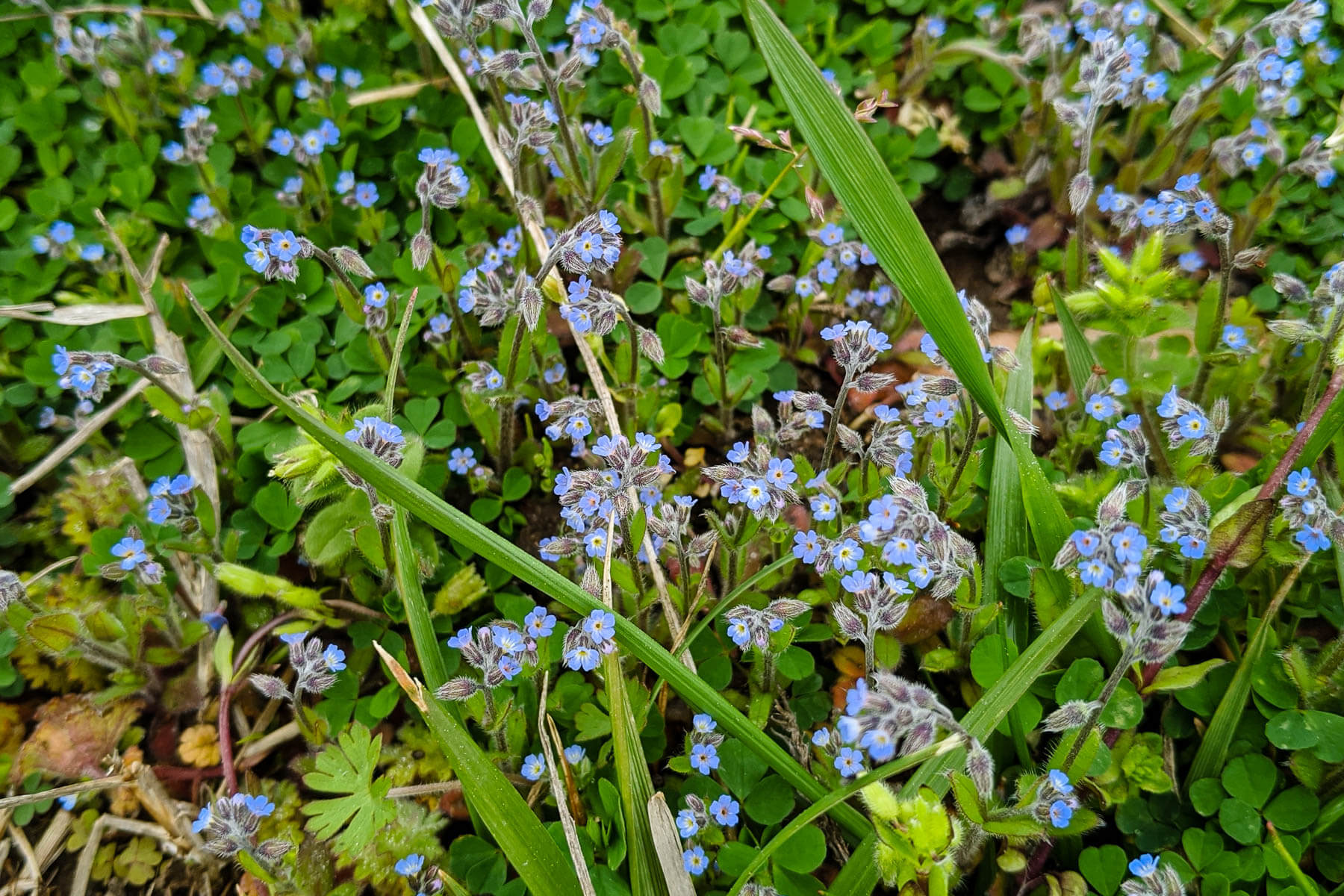 Forget-me-nots are a group with dozens of species characterized by miniature blue flowers. Most of the species have the potential to be invasive, but in the Chesapeake region, there are three native species of Myosotis: Myosotis macrosperma, myosotis verna and myosotis laxa. The flowers are edible little trail snacks, but as with all foraging, be careful. There is a lookalike to myosotis that can be toxic.
Forget-me-nots are a group with dozens of species characterized by miniature blue flowers. Most of the species have the potential to be invasive, but in the Chesapeake region, there are three native species of Myosotis: Myosotis macrosperma, myosotis verna and myosotis laxa. The flowers are edible little trail snacks, but as with all foraging, be careful. There is a lookalike to myosotis that can be toxic.
Bluets (Houstonia caerulea)
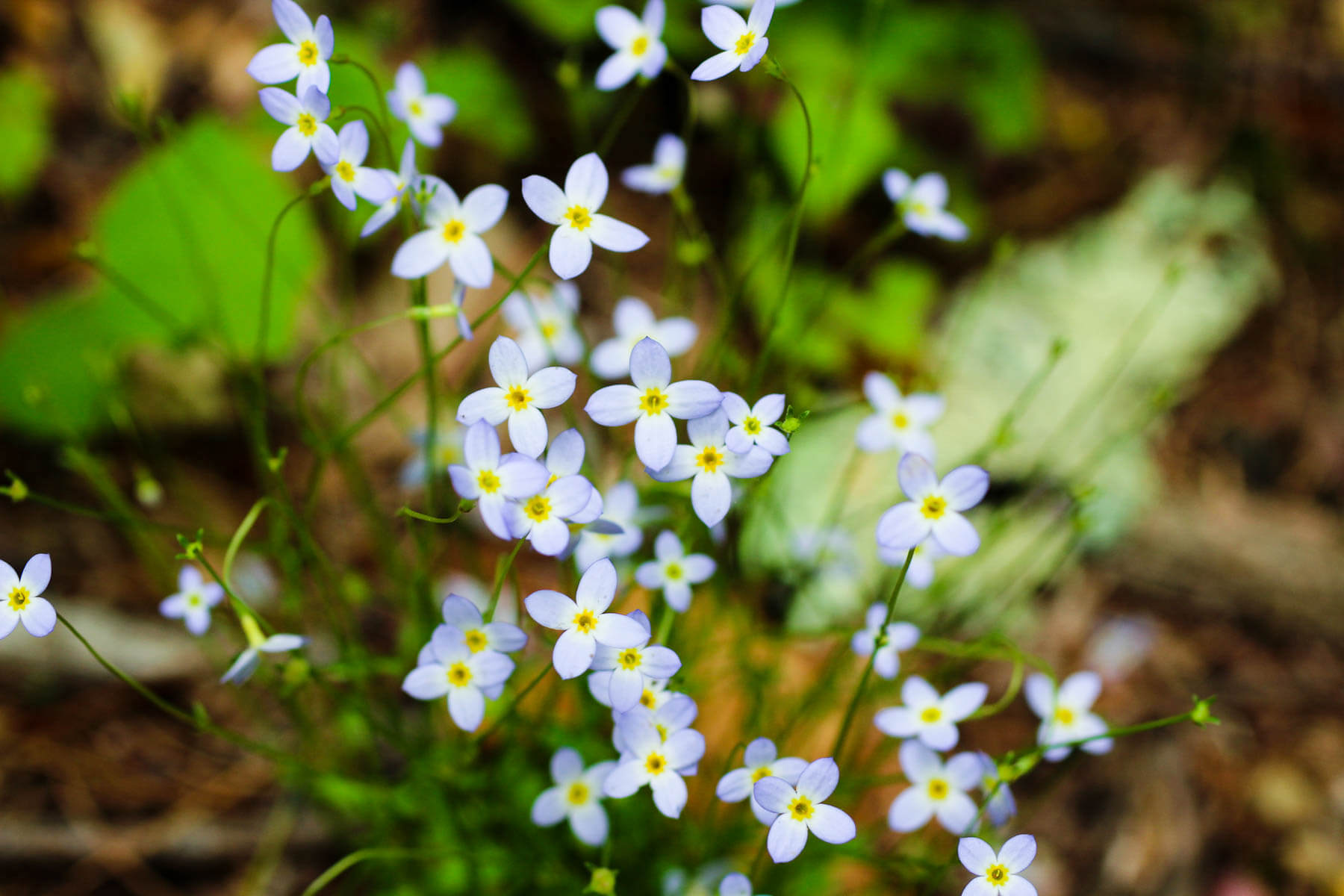 (Photo courtesy Rhonda Ridley/iNaturalist CC BY-NC)
(Photo courtesy Rhonda Ridley/iNaturalist CC BY-NC)
Bluets, natives to the watershed, are charming little flowers that seem to dance on their spindly stems. They prefer moist areas and have little foliage. The edible flowers look almost like four-pointed stars, pale blue with yellow centers. Bluets are sometimes called “Quaker ladies” because of the pale blue color resembling ladies’ dresses.
Speedwell (Veronica)
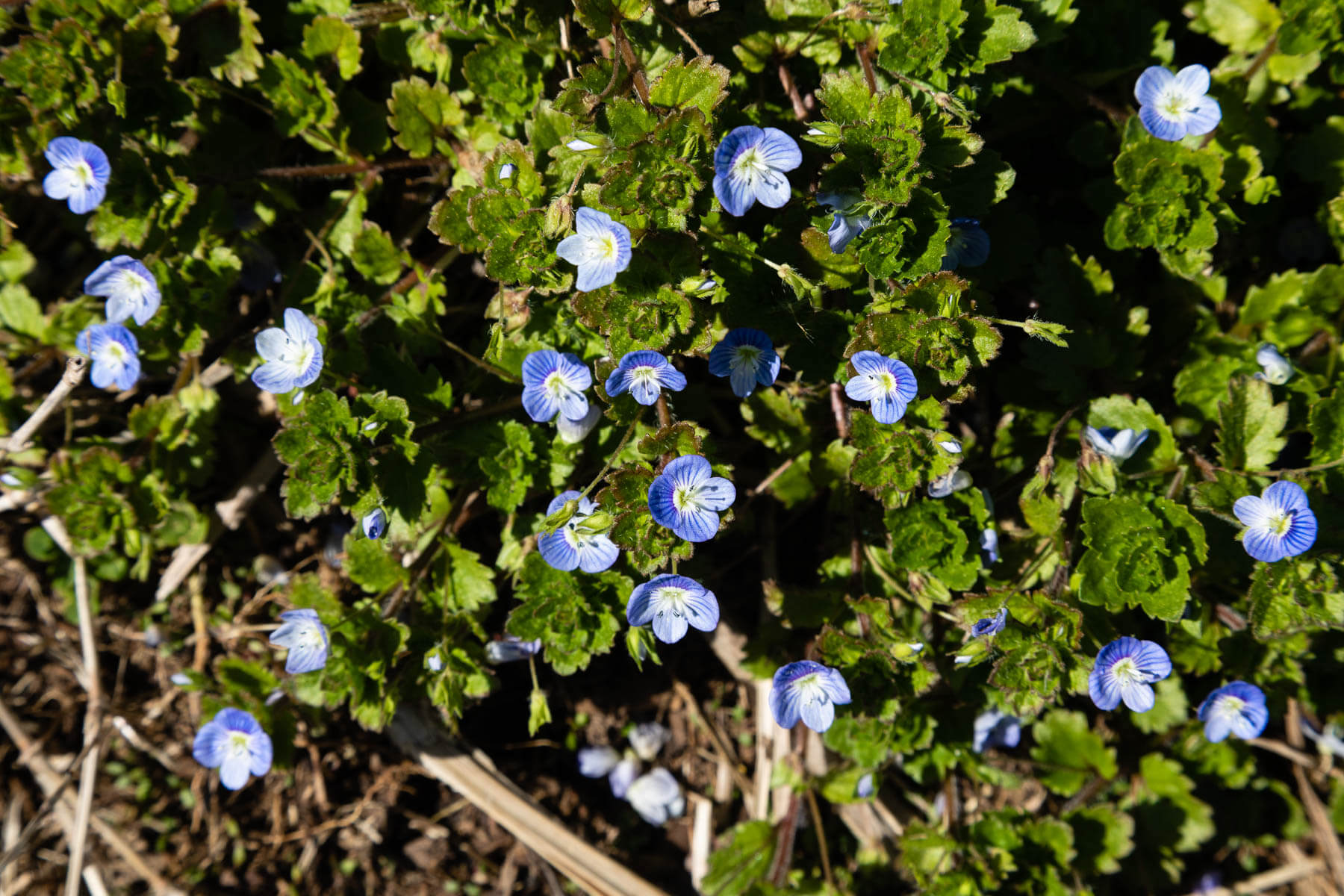 This little groundcover sports dense but miniature foliage and bright blue, cheery flowers. The petals of the flower are delicate but perfectly formed, featuring almost pinstripe-style lines of deep blue on a pale blue background. The blue petals meet at a white center. Speedwell has an astringent quality and is more often used for tea than as a salad green, but the young leaves taste a bit like watercress.
This little groundcover sports dense but miniature foliage and bright blue, cheery flowers. The petals of the flower are delicate but perfectly formed, featuring almost pinstripe-style lines of deep blue on a pale blue background. The blue petals meet at a white center. Speedwell has an astringent quality and is more often used for tea than as a salad green, but the young leaves taste a bit like watercress.
While foraging can be a fun activity, you must be responsible. Only eat plants that you are positive you can identify, and only if you are sure that those plants are free of pesticides or other outside contaminants. When in doubt, ask an expert at your local extension or nature society.

Comments
Due to quarantine, ‘been foraging my backyard with these wild edibles. Wild violets, chickweeds, purple dead nettles, and cleavers are good addition to salad and morning tea. For salad, my favorites are violets, chickweeds. For tea, cleavers and purple dead nettles.
Great article! I know it’s not picked for consumable flowers, but the wild Garlic Mustard is up and blooming and the leaves are sooo delicious! We enjoy a colander full each night in our salads! The plant has cute little white flowers too.
I appreciate this post. It is good to urge people to eat the invasive and aliens. And let the natives ones rest....it would be a shame to see violet patches for example, weakened by people wantin a rush of color on their food.
Thanks Caitlyn for an interesting article. It is particularly useful during the shelter in place phenomenon where we are constantly looking for something to tickle the imagination and education of young children. We are focused on successional ecology right now in our field trips and edible plants are a great extension of the outdoor class room. Please consider another article on medicinal plants. There is considerable interest in wild lettuce and other asters for this purpose. Well done! -Lee
Delightful - I liked the added “taste” descriptions. Even if this article does not lead to a greater consumption and control of chickweed, it should get more people outside to walk, wander, wonder and appreciate another world right underfoot. Right now, before the urban lawnmowers and agricultural herbicides have done their early business, the views of these pastel botanical wonderlands from our cars and home windows, is a joy to behold.
Thanks, Caitlyn, for another great article from you at CBP..
Thank you!
Your comment has been received. Before it can be published, the comment will be reviewed by our team to ensure it adheres with our rules of engagement.
Back to recent stories